Americans found it both funny and frightening last week that Donald Trump convened a cabinet meeting to mark his 100 days in office the second time around and that each of his cabinet members took turns praising his amazing leadership and incredible accomplishments. They were literally unbelievable, since they were demonstrably untrue.
The thing runs over two hours and as the video shows, Fox News presented the whole thing, uninterrupted. As many people noted, it resembles the sort of spectacle you get in authoritarian societies where personality cults dominate politics. With Donald Trump, this is an easy thing to see since Trump himself is planning military parades to mark his birthday and all of his communications from the Executive Order signings to the way his trained parrot deals with the media emphasise the authoritarian and egotistical nature of Trump’s administration. Everything is about him and attention.
Democrats - that is, people who believe fundamentally in the principles of liberal democracy - don’t behave this way. They don’t. You will find people in Newfoundland and Labrador joining in the criticism of Donald Trump for this sort of thing but they aren’t democrats. They come from a political culture that is authoritarian and in which the democracy is managed to the point of it not being a democracy at all.
What those people are doing is really just aping what they want others to see them as. It is a fashion, like the clothes they wear, the cars they drive, the vacations they take, and the opinions they hold. Not rooted locally but imported from the metropole, in true colonial fashion. Baymen copy townies. Townies copy Torontonians. Torontonians copy New Yorkers. Sometimes they cut out the middle and just go straight to the source but the action is all the same.
Andrew Furey and the provincial Liberals - now undoubtedly rebranding as Team Hogan - were especially fond of talking critically about Trump this weekend just as the federal Liberals have been and Andrew Furey has since last November. They also spent the weekend lauding Andrew Furey for his phenomenal achievements as Premier in a mere four years, something Furey did himself last week in a series of news media interviews. Then they announced that, as everyone expected, John Hogan - Furey’s chosen successor - got the job Furey had.
None of them saw any problem in doing for Furey what Trump’s cabinet had done. And just to be clear, the great love cuddle for Furey was not just a one-off. Lucy Stoyles, one of the Liberal backbenchers, posted a comment on Facebook along with pictures of Furey from Friday night’s event. “What a privilege it is to serve the people especially under such an amazing Premier of NL,” Stoyles wrote.
But that’s nothing compared to the sorts of fawning and unnecessary praise for Furey during the House sittings over Furey’s time in office or during the annual fundraisers. Speaking in the House of Assembly during the Churchill Falls show, Siobhan Coady made a point of saying “I also want to recognize and thank the Premier for his leadership, direction, strength and negotiating ability. We would not be in this incredible position today without him.”
Nothing odd for Coady. Here she is in 2023: “Under the leadership of Premier Furey we have done what many said was impossible. We have lowered the net debt – forecast to be $17.1 billion in last year’s budget with effort, focus, and solid leadership it is now $15.7 billion – a $1.4 billion decrease.” All as ridiculous in every sense as anything said about Trump yet in Newfoundland and Labrador people think *this* sort of fawning drivel is normal.
Here’s another example from Tom Osborne: “What I will say is that this government, under the leadership of our Premier, has brought in the Health Accord, which is a 10-year plan to transform health care. I have been told by other ministers across the country that it is the envy of the country. We are making great strides in health care.” There are others from John Hogan, Andrew Parsons, and pretty much the whole Liberal caucus. The same sort of thing went on back to Danny’s time and has remained a staple of current political language in Newfoundland and Labrador.
The picture at the top of this column is from Friday’s love-in for Andrew Furey. It came complete with a video about Furey and messages of praise sent in by request. There’s no accident that the whole thing looked very much like the “Thank you Danny Williams” event staged by the Pea Seas after Williams left politics and a Facebook page that survives today. Those are not the only parallels or connections. Randy Simms is a Liberal staffer. Simms’ son produced a hagiographical video about Williams that came with a gala screening. Mark Critch is a keen supporter of both Williams and Furey and his wife is Furey’s chief of staff.
What this reminds you of is how elites in Newfoundland and Labrador are interconnected despite superficial trappings of having different party names. All three parties are controlled by the same elites whose focus is on the same class of urbanized, university educated managers. There are no ideological or other differences among them. You can see this most clearly in the way the current Liberals are merely carrying on what the Pea Seas under Williams did before them in every policy area. One of Andrew Furey’s self-proclaimed achievements, for example, was figuring out how to pay for Williams’ Muskrat Falls fiasco. It happened to be the same plan Williams had and, just to be clear, the Williams-Furey will inevitably collapse some time around 2030, as it inevitably must under its own ridiculous weight. Furey has a give-away deal to match Williams’, driven by the same egocentric motivation, and for good measure, Furey gave away de facto control of the Churchill River until at least the end of the century and for not enough money to pay for Williams’s mess.
We lived in a managed democracy in which there is merely the appearance of public involvement in politics and government decisions. Stay informed. Become a subscriber.
If continuity is one way to figure out how Newfoundland and Labrador politics works, contradiction is another. That business about Trump is a reminder of the way the people who dominate Newfoundland and Labrador society very quickly figure out the official, acceptable view on something, and then pass it around. There is no public discourse, no debate, no disagreement. There was a good example in 2019, when a young man died on a downtown street in Sin Jawns only a few hundred metres away from the Liberals’ annual $500 a plate fundraising gala. The focus of public attention - especially among the three parties - was brief just as it was focused not on the deeper problems of government policy it revealed but rather on who should properly exploit the underclasses: the private sector or public servants.
Danny Williams and the Pea Seas worked diligently to crush public discussion of major issues. They branded anyone who disagreed with them as traitors. No attack was beneath them. Andrew Furey and the Liberals finished the job both by reducing the House of Assembly to a prop for their own spectacles - like the January “debate” - and by eliminating public discourse almost completely. It’s hard to discuss anything if the government never tells you what it is doing until the deals are done.
Furey and the Liberals undermined accountability by demolishing the House’s regular calendar of throne speeches and budgets. Furey’s last throne speech was in 2022 and his contempt for the House and democracy was naked every day he was Premier. Andrew Furey may have scolded the Pea Seas about the need to elevate “public discourse” but Furey himself did nothing to promote anything that one could call public discourse, debate, or even basic information.
Public debate and government transparency are crucial elements of democracy since politics is about who decides what is important in a community. It is the “authoritative allocation of values” as one political scientist put it. In a democracy, everyone plays a role in deciding. Political parties reflect the views of different groups. There is debate. There is disagreement. And there is a public display of both the disagreement and the decisions with the legislature - full of delegates elected directly by the people - holding the key role in approving or disapproving of government proposals and budgets.
In Newfoundland and Labrador in the current era of Celebritocracy, government decisions come from a handful of people, mostly unelected, centred on the Premier. Even cabinet ministers have little sway. You can get to be party leader and Premier without having to spend any time in government, without running for public office before getting the job, or in any way demonstrating you have any knowledge of, understanding of, or concern for major public issues.
Andrew Furey had never held any elected office before he became Premier. He got the job by appealing to a relative small group people who had signed up to be Liberals. His leadership campaign deliberately did not speak to anyone outside the party at all and during the campaign he revealed no thoughts or ideas about where he thought the province needed to go. The same thing just happened with John Hogan, although Hogan at least had been a run-of-the-mill justice minister for the past four years. Flip back to Danny Williams and the same is true. Williams had held no elected office until he won a by-election in 2001. He then sat for three years - much to his eternal annoyance - as leader of the opposition. He did not do well at one point falsely accusing the Liberals of trying to hack opposition computers. Williams at least did tell us a great many things about his ideas of politics and the province, even if he didn’t deliver most of his promises. But recall, he did not have to campaign for the leader’s job. The Pea Seas acclaimed him as leader. Deliberately. They also deliberately avoided a leadership contest to replace him, preferring instead to take Danny’s handpicked successor. They tried to replace her with another of Danny’s handpicked successors but that was an even bigger failure than Kathy Dunderdale.
Rather than having open competitions that invite public participation, all three political parties in Newfoundland and Labrador pick leaders chosen privately by party insiders then mount shows in which there is no doubt about the outcome. As in the House of Assembly, the campaign John Hogan just won was a show. It is a rubber stamp approval for a decision already taken somewhere else, in private. There are a handful of people who participate in a meaningful way. Most were simply observers who were merely made to feel by the process and the people running the rigged process they had some real value. The people who voted for John Hogan represented less than two percent of the province’s population, after all. And even they didn’ t really get to pick after a head-to-head contest. As for the rest of us, we were reduced to the role of mere witnesses to the spectacle, the audience to a performance, just as we are during elections and in between.
Andrew Furey loved photo ops. So did Danny Williams, although, as we can see from the roles he got on 22 Minutes, Williams liked all sorts of celebrity. On one level this is about the politician’s ego, just like Andrew Furey’s “I love me” wall in the Premier’s Office was about ego and a deeply rooted sense of insecurity and inadequacy. But there’s really something else going on here. After all, the Peas Seas took Kathy Dunderdale - Williams’ hand-picked successor - and simply put here picture on the side of the bus and praised her the same way they praised Williams as the fountain of all wisdom and bounty. The Liberals picked up with Dwight Ball the same way, calling themselves Team Dwight but it all rang hollow until they found their own mini-Williams, who had carefully cultivated all the trappings of celebrity, including carefully displayed friendships with other celebrities and public appearances much as Williams had done.
Furey’s tweak to the culture of authoritarianism, anti-democracy, and celebritocracy was art. It’s striking the number of events he and his Brain Trust organized that involved sculpture and paintings. All of these are about the appearance of impact or importance without actually changing who controls power. The best examples of the politics of art photo ops for Furey are the ones involving Indigenous groups.
Furey also embraced the Cult of Victimhood built around the Royal Newfoundland Regiment and happily acted along with his real family as the surrogate family for the Unknown. One of his last art poses was with the maquette of a new statue of a soldier kneeling with a small girl. There is something about the image that is unsettling, beyond the crudity of the design, just as there is something off-putting about a similar one depicting a male Royal Newfoundland Constabulary constable with a small girl.
The Beaumont Hamel Cult is not about remembrance, history, or indeed even the Regiment. If it were any of those things, then Furey would also have been keen to prevent the corruption of the memorial university, something he showed absolutely no interest in as it fell apart during his tenure. This Beaumont Hamel cult is a modern, performative display that serves some other current political and social role.
One potential role for the Beaumont Hamel photo ops, of course, could be affirming political and social dominance of certain groups, but if that were true, there’d be good reason to use more symbols than the slaughter at Beaumont Hamel. There are stories of bravery and of greater connection with world events in the Second World War. All of these are ignored. That leaves us with the simple observation that, as with all other performances, it is most importantly about the appearance like a politician from the mainland stopping for lunch at Ches’s fish and chips, appointing the Newfie to cabinet as minister of fisheries, or joining other Mainlanders for a Screech-in.
The art photo ops are something else. Art as a tool of political or politicized propaganda. Furey appears enlightened. There is supposedly some symbolism in the highest government official accepting gifts of artwork from an Indigenous person, including art commissioned by the provincial government.
There is the appearance of meaningful participation by Indigenous leaders and Indigenous artists in the province’s social and political life even though they are merely being managed like everyone else outside the small circle of the most powerful. The program itself manages the art by selecting specific artists and subjects for a commission.
Indigenous leaders become complicit in the charade, referring in official news releases to the program as one that - with no sense of irony or hypocrisy - has the leader of the Qalipu First Nation say the artwork “share[s] the true history of our lands.” Nunatsiavut Government President Johannes Lame said something very similar in the official news release at an unveiling last week on behalf an Inuit group that, for political reasons, disowned at least half of its traditional territory and the Inuit Metis living on it. “[Art] is a way of preserving history, honouring our ancestors, and passing knowledge to future generations,” the official news release attributes to Lampe.
Not surprisingly, one of the key elements of the politicised art program has been two statues of Beothuk. The depictions are fanciful and include paternalistic male figures and physically smaller female figures with infants none of whom bear any resemblance to Beothuk people in any way. They do, however, repeat the conservative, traditionalist images like the paternalistic male figures of the political and military statues with small, fragile females. THis is part of what is unsettling about this politicized art. Compare the girls in the police and army statues with the Fearless Girl, for example, added to the Charging Bull statue on Wall Street.
Also not surprisingly, the presentations included prominent roles for Mi’gmaw leaders, especially Misel Joe who has been part of a movement to appropriate the Beothuk culture and history in order to advance his group’s own political desire for recognition and power in the province despite not being Indigenous to Newfoundland and Labrador. The politicization of art, the overwhelming emphasis on control as opposed to free and open creativity, and the use of performance and appearance in place of substance is not confined to any one group or individual in the province. It is the style of the times in the Age of Celebritocracy.




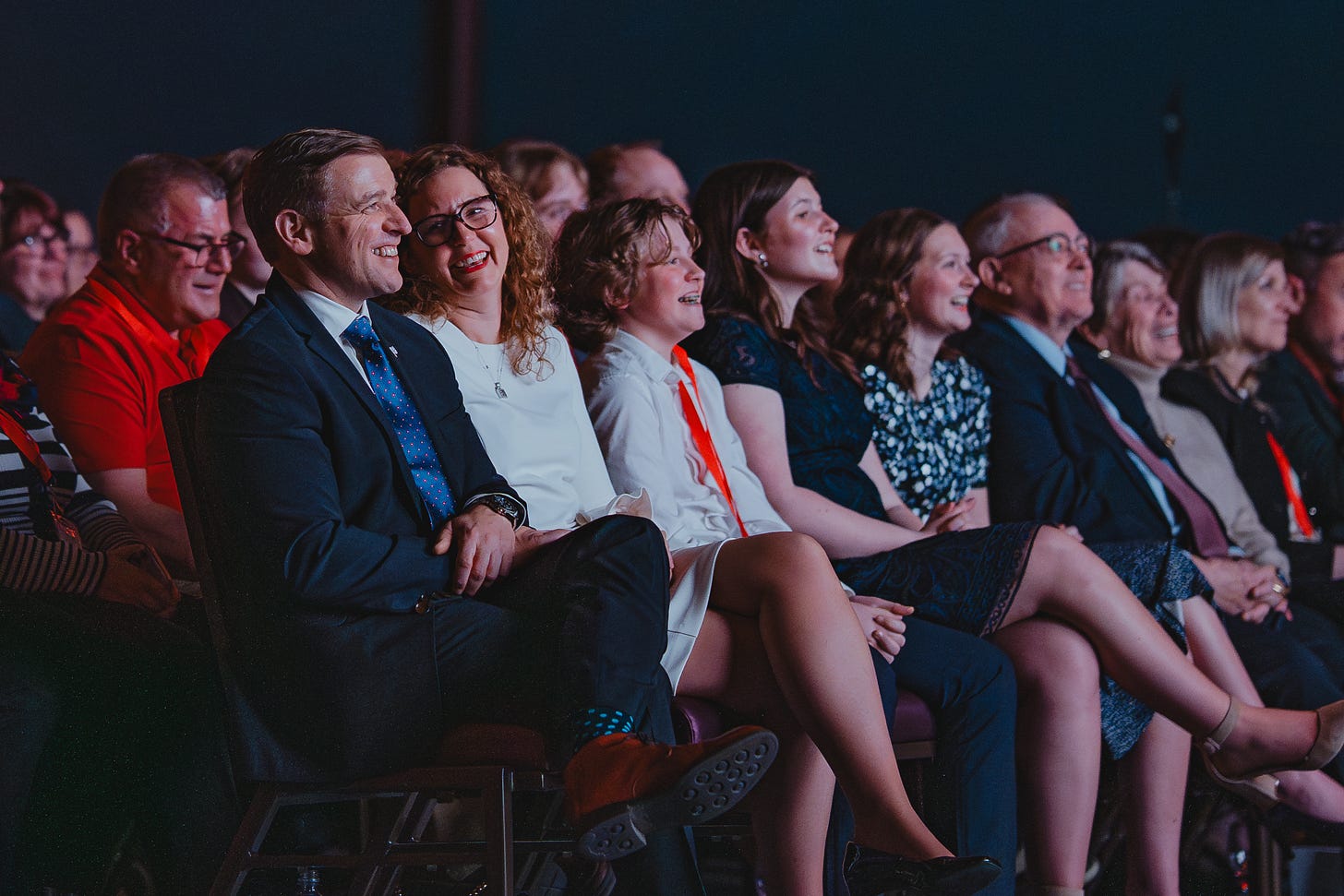
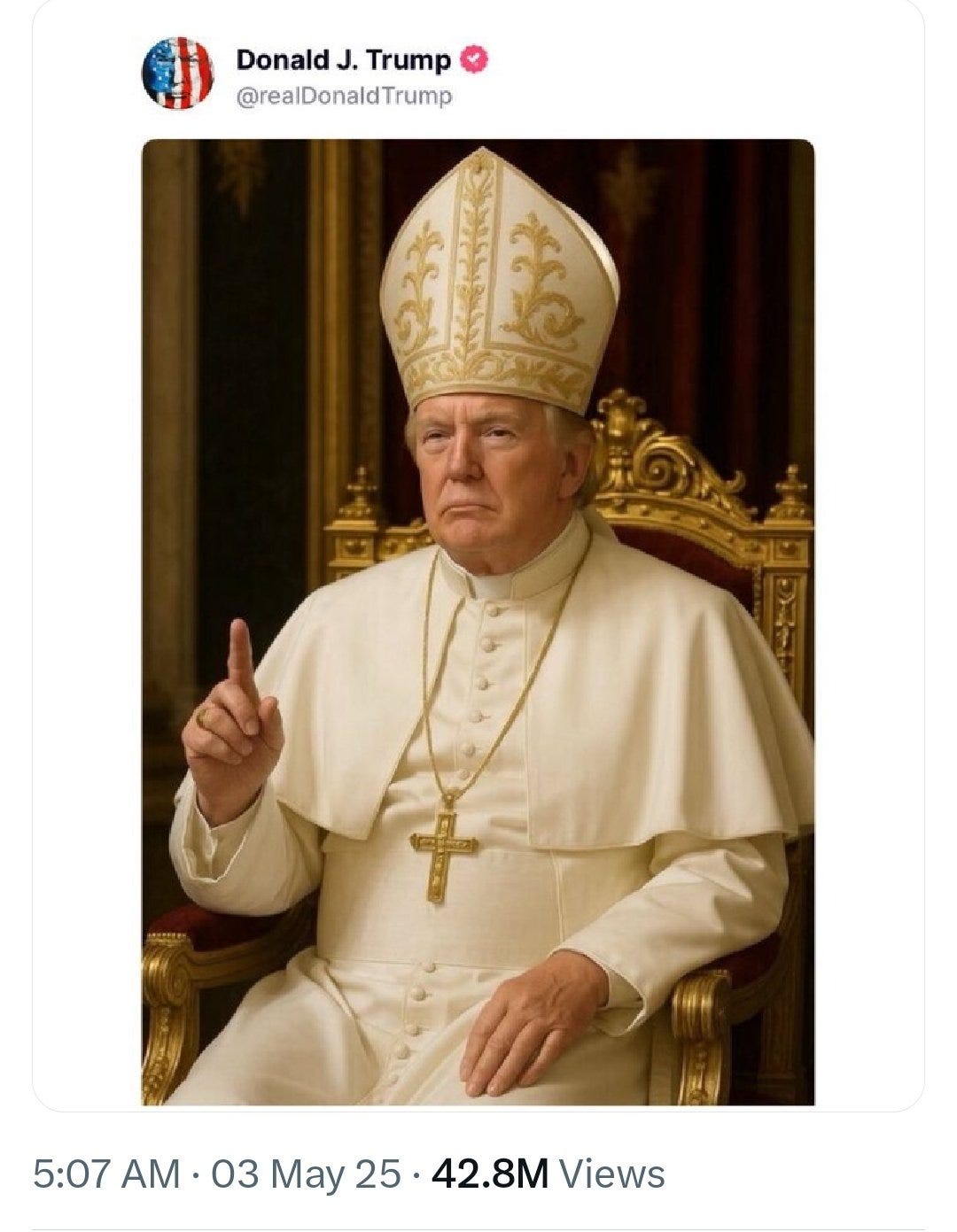

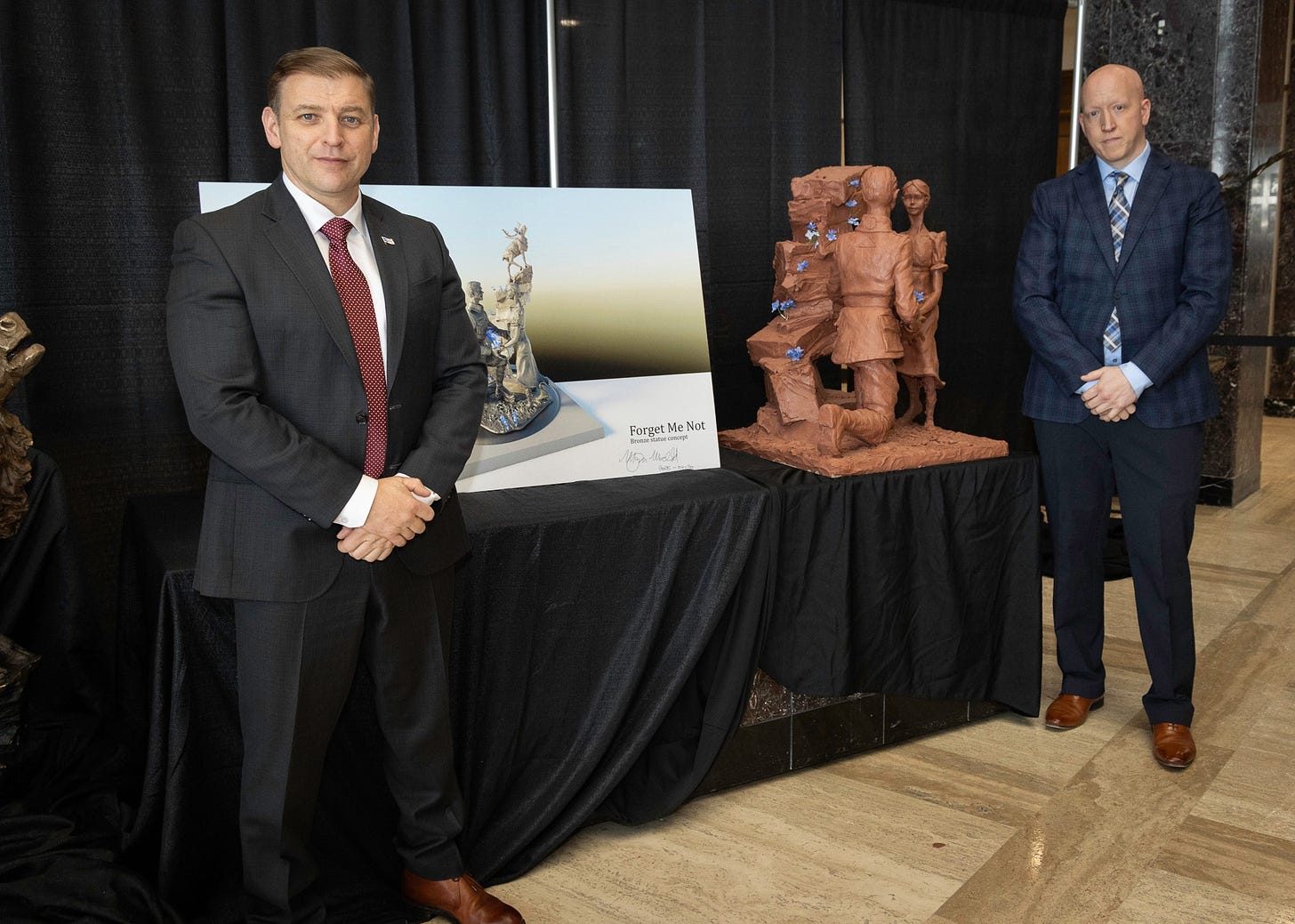
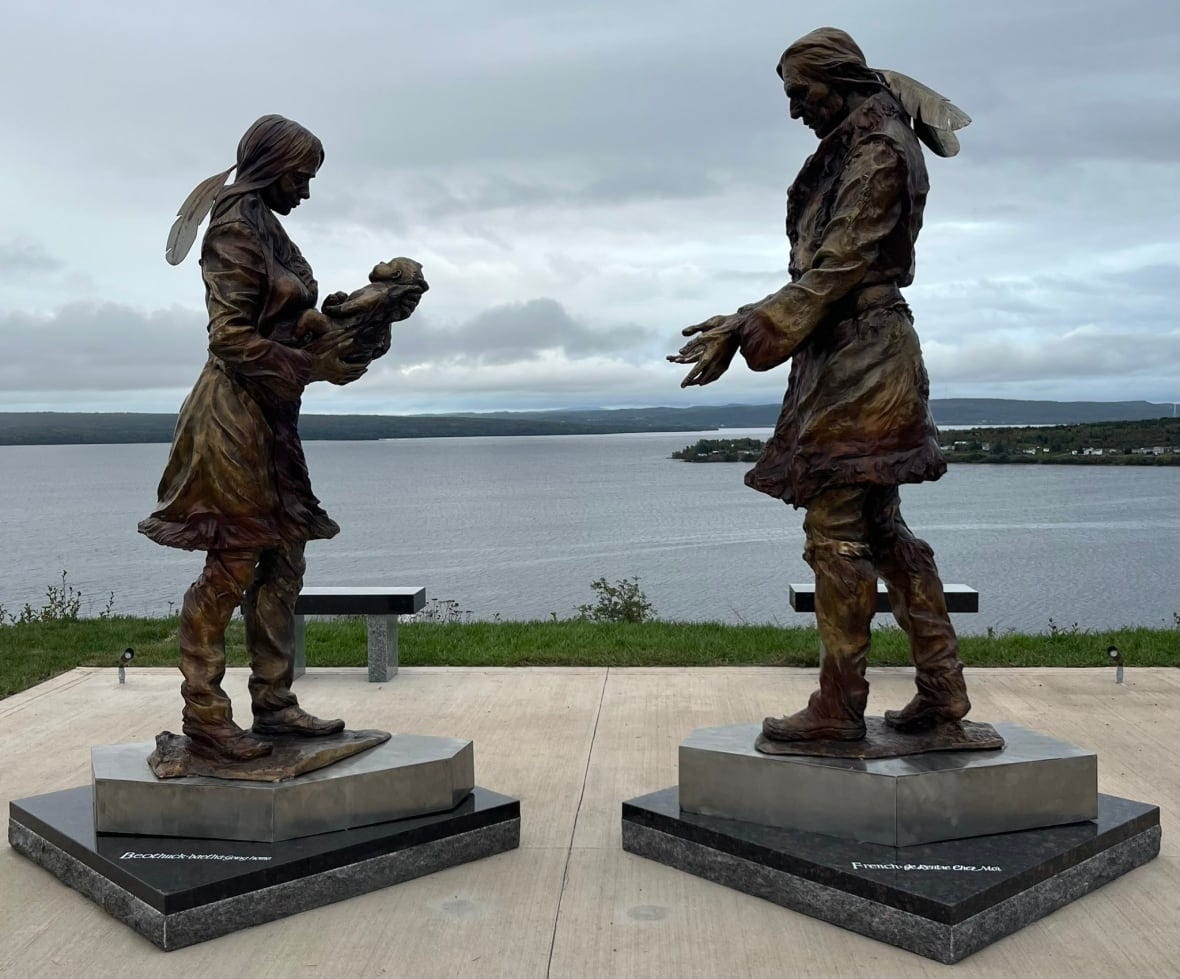
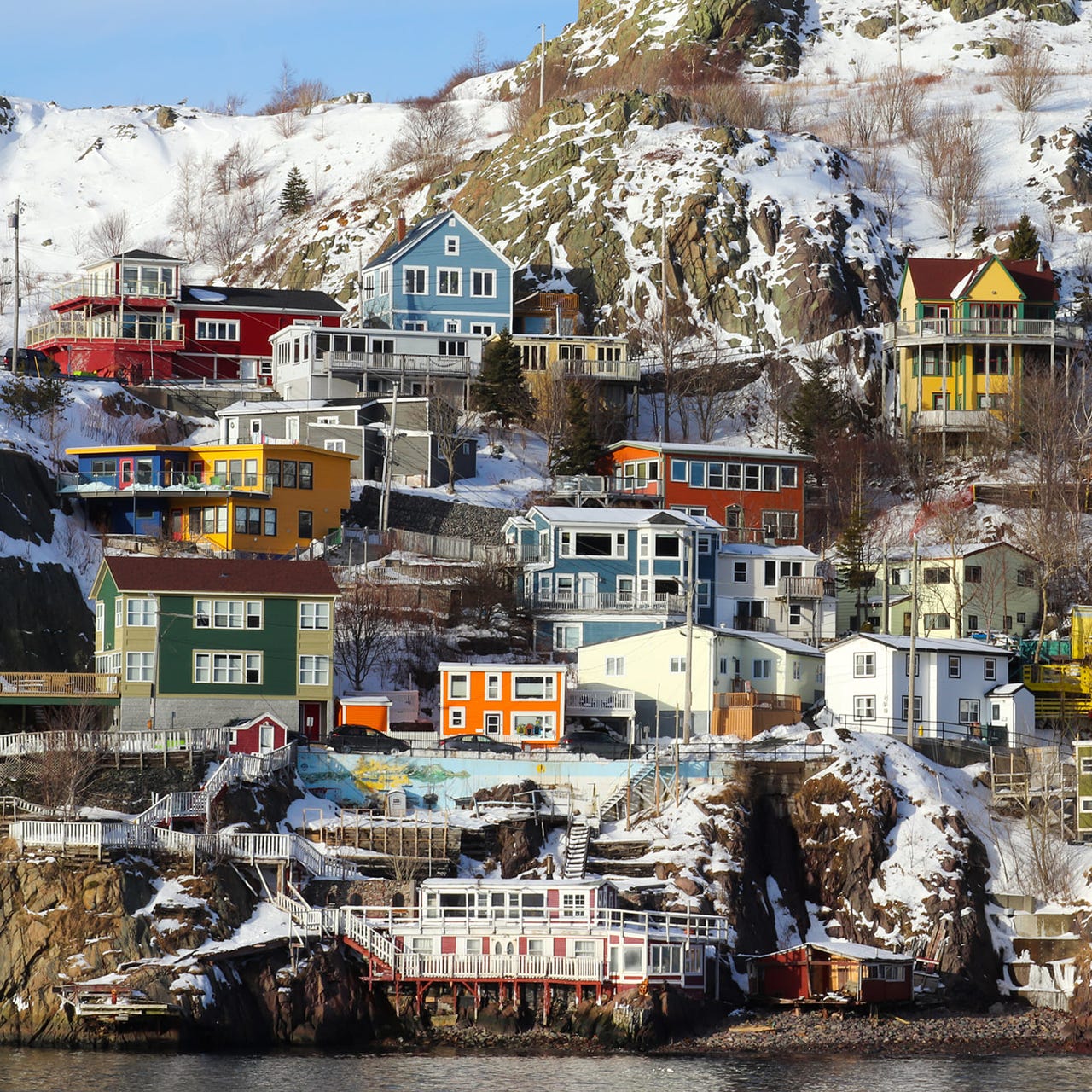
I called the Premier's Office about the security guards not having a small shelter to go into down by the Unknown Soldier's Tomb. They are out all in all kinds of weather and receive no respect at all from the government but unless Furey could have gotten a photo op out of this there would be no shelter. I was ignored as was my friend who followed up with a letter. I found this Furey Government a failure and he will only be remembered for the useless sugar tax.